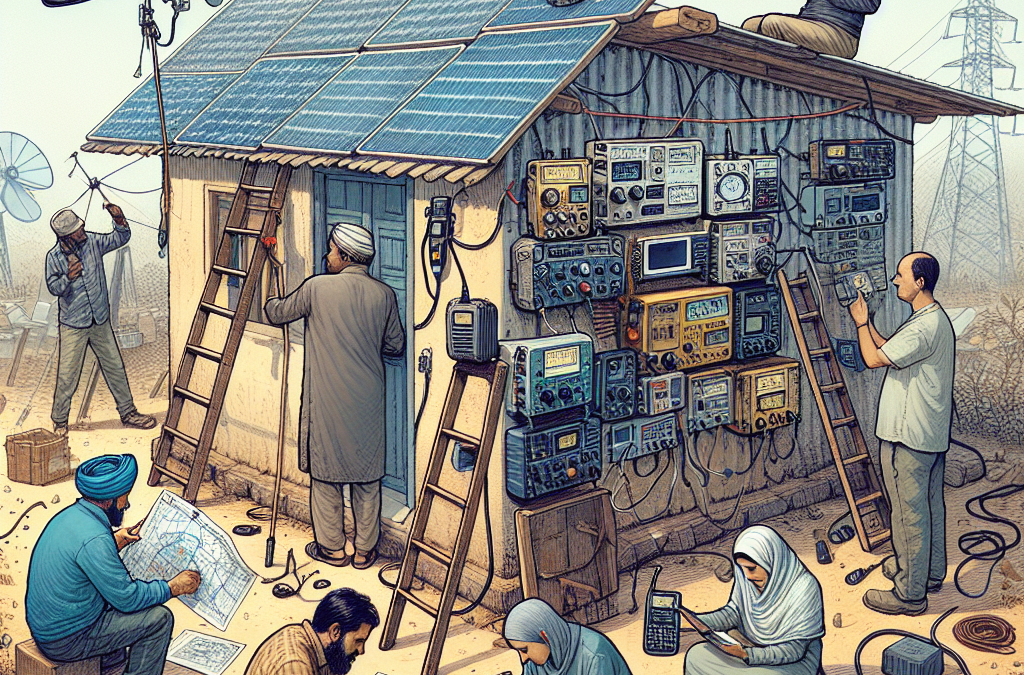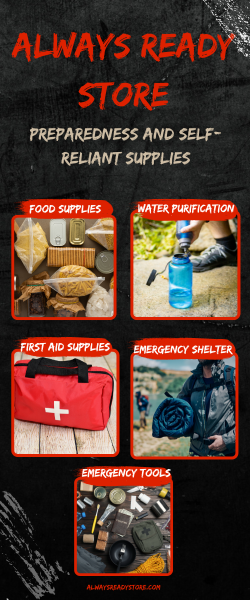Understanding Off-Grid Communication Needs
Assessing Your Environment
So, the first step I took was really getting a feel for my environment. Living off-grid means you’ve got to know your surroundings. Are there mountains, valleys, or dense forests? These can all impact signal strength and route options for communication. Spend some time observing how different weather conditions affect the area too.
Next, think about where the closest neighbors are and how far apart you’ll be communicating. If it’s just you, go for a longer-range system. But if you have neighbors within a few miles, you might want to stick with something simpler, like walkie-talkies or a local repeater.
Lastly, don’t forget about the flora and fauna! Yes, I mean the trees and animals. Believe it or not, they can obstruct signals, so it’s worth narrow-scaling where you’ll set up your primary communication unit.
Determining Specific Communication Needs
Next up, I dug into exactly what I needed in terms of communication. Are you just trying to send simple messages, or do you need voice calls? Maybe you want something like satellite internet? Knowing what you want to achieve is crucial.
Also, consider your power source. If you’re going solar, you’ll need to take energy usage into account. Some systems require a lot of power, and if you’re relying strictly on solar energy, you don’t want to be running out of juice too quickly.
Lastly, think about what kind of emergencies you might face. Having a backup plan for when things go haywire is a must, so I always recommend having more than one method of communication. Better safe than sorry, right?
Thank you for reading this post, don't forget to subscribe NOW for FREE!
Budgeting for Off-Grid Communication
Now, let’s talk dollars. Setting up an off-grid communication system can range from cheap to, well, not so cheap. It’s crucial to set a budget before diving in. What you base that on is personal, but try to avoid impulse buys!
I found it helpful to list out what devices you think you’ll need, and then do a little comparison shopping. There are great deals out there, especially if you keep a keen eye on second-hand markets. Many folks sell gently used equipment after upgrading, so don’t sleep on that!
Finally, don’t forget to factor in any ongoing costs. Monthly fees for satellite internet, or replacement batteries for your devices add up over time, so keep that in check to avoid future surprises.
Selecting the Right Communication Equipment
Types of Communication Devices
Alright, so let’s break down the options. I personally think a mix of devices is the way to go. You’ve got your walkie-talkies, which are great for short-range communication. Super easy to use and affordable.
If you’re thinking bigger, consider ham radios. They’re more complex but give you far better range and more reliability. Just remember, you might need a license depending on where you are, so check that out first!
Lastly, satellite phones and internet connections are fantastic for when you need to be able to reach out globally. They can be pricey, but when you’re far off the grid, you’ll appreciate the peace of mind that comes with it.
Installation Tips
Setting things up can get a little tricky. Make sure to read the instructions carefully! I can’t stress how much of a headache it is when you skip something. Proper installation is key to ensuring everything runs smoothly.
Test your equipment in different locations around your property. You might find sweet spots that work better than others. I even set up small makeshift stations in a few areas to see which ones jived better with my communication needs.
Don’t be afraid to ask for help! I consulted with some buddies who were a bit more tech-savvy than I am. A second pair of hands can make all the difference, especially with some of the more advanced setups.
Regular Equipment Maintenance
Now that everything’s set, let’s not forget about upkeep. Maintaining your devices is essential. I learned this the hard way when one of my radios started acting funky because I hadn’t charged the battery properly.
Regularly check your equipment for wear and tear. Just like a reliable vehicle, communication tools need love too. Replace batteries and check connections often to ensure everything’s reliable and ready when you need it.
Lastly, don’t ignore software updates if your devices have them. Keeping everything ‘updated’ keeps you in sync with whenever advancements happen, and can sometimes even improve functionality—bonus!
Testing Your Communication System
Conduct Regular Tests
The importance of testing can’t be overstated. I set aside time each month to run drills, practicing different scenarios and making sure everything worked as intended. It’s surprising how many little things can go wrong!
Include everyone in your tests, especially if you’re in a community setup. It’s great for improving your plans and making adjustments when necessary. Plus, it builds teamwork and ensures everyone knows how to use the equipment properly.
Always take notes during these tests. It’s beneficial to recognize patterns and troubleshoot ahead of emergencies rather than during them, you know? I keep a log of lessons learned from each testing period to make tweaks in my setup, ensuring it’s as efficient as possible!
Feedback Loop
Getting feedback from you and anyone else involved is crucial. I made it a habit to gather input after our drills to see what worked and what didn’t. Sometimes, I think I’m on top of things, only to discover that someone else had a troubleshooting problem that I never anticipated.
Encourage open dialogue about how the system is functioning and areas for improvement. Fresh perspectives can lead to innovative solutions that you might not have thought of!
Maintaining that feedback loop consistently leads to a better overall communication setup. It’s like evolving and adapting, ensuring you’ve got the most reliable system possible as your needs change!
Preparing for Emergencies
Lastly, prepare for emergencies. We all know that the unexpected can happen, and off-grid living can sometimes present challenges. So, having protocols in place for communication during emergencies is key.
I always keep flashlights, extra batteries, and backup communication methods handy. Create a plan on how to ensure reachability and who will be the key contacts if you need assistance.
Lastly, practice makes perfect—when the chips are down, you’ll want everyone to know how and when to get in touch with each other, even in a pinch!
FAQ
1. What types of equipment do I need for an off-grid communication system?
You’ll want to check out a combination of walkie-talkies, ham radios for longer-range communication, and potentially satellite phones for more critical needs. The choice depends on your communication goals and surrounding environment.
2. How often should I test my communication system?
I recommend testing your tools at least once a month. Regular drills can help ensure everything is functioning as it should and allow you to adjust if any issues arise.
3. Do I need a license for ham radios?
Yes, in many places, you’ll need a license for ham radios. It’s essential to check your local regulations before getting started!
4. What should I include in my emergency communication plan?
Your emergency plan should include alternative communication methods, status check protocols, and key contacts. Make sure everyone is on the same page to avoid confusion when things go south!
5. How can I maintain my off-grid communication system?
Regular checks and maintenance are crucial. Ensure equipment is charged, replace batteries when needed, and keep an eye on wear and tear. Regularly updating software and testing functionality are also key parts of effective maintenance.






